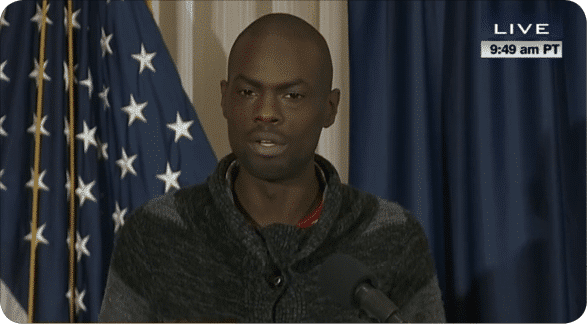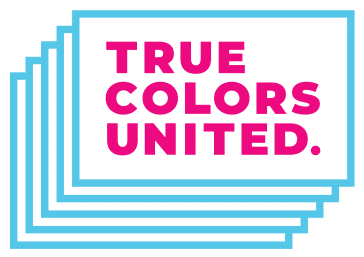
Youth homelessness is often referred to as an “invisible issue.” Young people experiencing homelessness often don’t “appear” homeless, and few are quick to stand up and announce their housing status. In order to address youth homelessness, we need a clear picture of the issue – and in order to achieve that clarity, we need data and information.
Yesterday, the Family and Youth Services Bureau, Administration on Children, Youth and Families released a first-of-its kind study that offers new data on youth homelessness in the United States, as well as insight into how our nation’s service systems might better meet the needs of these young people. Conducted by the University of Nebraska-Lincoln, the study collected data detailing the experiences of 656 14- to 21-year-olds in 11 cities across the country. Data collection was done through interviews and focus groups with youth.
The study gives an unprecedented look into the landscape of youth homelessness in our country. Here are some key findings:
- More than half of all youth who experience homelessness do so for the first time because they are asked to leave home by a parent or caregiver.
- The average age for youth to first experience homelessness is 15 – and the average time spent on the streets is nearly two years.
- While experiencing homelessness, victimization is common. Almost two-thirds of youth surveyed had been raped, beaten up, robbed, or otherwise assaulted. And for every additional month spent on the street, the likelihood of victimization increased by 3%.
- Homelessness puts emotional and behavioral health at risk. Over 60% of respondents reported struggling with depression. Over 70% reported having experienced a major trauma (such as physical and sexual abuse or violence), with nearly 80% reporting having experienced symptoms of post-traumatic stress for over a month.
- Employment (71.3%), transportation (66.6%), clothing (60.4%), education (54.6%), and shelter (55.3%) topped the list of service needs identified by youth. Barriers to shelter included lack of room at shelters (52.6%), lack of knowledge of where to go (51.8%), and lack of transportation to get there (42.6%).
Lesbian, gay, bisexual, and transgender (LGBT) youth are disproportionately represented in the population of youth experiencing homelessness, and often face unique challenges:
- Nearly 30% of youth surveyed identified themselves as lesbian, gay, or bisexual, and nearly 7% identified as transgender.
- LGBT young people reported higher levels of victimization and trauma both prior to and during their experiences with homelessness.
- In addition to the barriers listed above, LGBT youth reported lack of LGBT-friendly policies and staff as inhibitors to shelter and services.
It’s clear that there is much work to be done – and the report offers recommendations for how we as a nation might better serve our youth. The report points out that the United States doesn’t have a coordinated system of care for youth experiencing homelessness. Instead, service providers around the country procure funds independently and from many different sources. By coordinating efforts, consolidating resources, and cooperating across agencies and sectors, we can “build the needed continuum of care – prevention, early intervention, longer-term services, and aftercare – for homeless youth,” as well as ensure that our data is thorough and accurate.
The report also offered specific recommendations for Street Outreach Programs, which provide young people with support and services such as meals, food coupons, hygiene kits, and medical/social service referrals. These recommendations include:
- Investment in shelter – Flexibility in response would allow access to youth who’ve been turned away due to capacity or age restrictions.
- Investment in families – Reunification can not only end homelessness, but also positively impact emotional health and outcomes.
- Intensive case management – Limited services that focus simply on providing youth with the bare necessities aren’t enough. A full range of services, including efforts to serve LGBT youth, are needed to ensure success down the road.
- Targeted support and intervention – Not every young person is the same, nor is every experience with homelessness. Specific approaches are necessary, including accepting and affirming services for LGBT youth.
- Investment in outcomes – Many homeless youth display strong resilience and an ability to overcome adversity. By helping youth own their strengths, providers set up a path toward outcomes such as stable housing, permanent connections, wellbeing, and education or employment.
Despite the challenges they face, 83% of youth surveyed said they had high self-esteem. And many reported having “many people in their lives they can turn to for support.” These factors are perhaps the most crucial elements in the effort to end youth homelessness – because they mean that the youth haven’t given up on themselves. So how can we give up on them?
Yesterday, our co-founder Cyndi Lauper was in Washington, D.C. to discuss this research with government officials and with young people who’ve experienced the issue firsthand. She said:
“No young person deserves to experience homelessness, especially because of their sexual orientation or gender identity, which is why we must stand with them to help them live the happy and healthy lives they do deserve.”
As usual, Cyndi hit the nail on the head. And I’d add (and I hope she doesn’t mind) “and desire” to the end of her quote. Because if there’s anything this study did (besides give us a ton of much-needed data) it was break down commonly-held misconceptions. These young people aren’t lazy or violent or entitled or content with their housing status. They’re resolute and creative and talented and bold. And they’re valuable. To borrow another Cyndi-ism, “I think we need these kids. We never know what they’ll become.”
Thank you to everyone who made this study possible.
Check out the full report and tell us on Facebook and Twitter what you think is needed to #EndYouthHomelessness.
